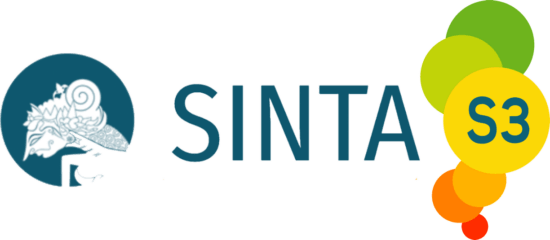The Concepts of Health and Illness of Children Living with HIV in Jakarta, Indonesia: Implications for Future Programs
Keywords:
children living with HIV, concept of health, concept of illness, positive health behaviorAbstract
Studies on children’s concepts of health and illness mostly took focus on the views of healthy children. As children living with HIV face different challenges, it is essential to gain more understanding on their views on health and illness. The study used a guided drawing activity followed by a semi-structured interview. Thematic coding was done to analyze of the interview data. There were three categories formed both on the concepts of health and illness: The biomedical, psychosocial, and healthy lifestyle representation. To children living with HIV, the concepts hospitals, hospitalization, medications, doctors, and symptoms of being sick are common to them. Children revealed the emotional fatigue from being regularly sick and hospitalized, being discriminated and having to pay medical bills as consequence of having poor health. On the other hand, children also acknowledged the positive consequences of being healthy (e.g. playing without being discriminated, being able to celebrate the next birthdays). The study concluded that the ongoing health education programs for children with HIV should incorporate the positive consequences of being healthy, instead of focusing heavily on medical-related topics. Having a positive outlook will hopefully motivate these children to adhere to their medications and therefore improve their quality of life.
References
Blom, R. (2006). The Handbook of Gestalt Play Therapy: Practical Guidelines for Child Therapists. Jessica Kingsley Publishers.
Callens, S. F. J., McKellar, M. S., & Colebunders, R. (2008). HIV care and treatment for children in resource-limited settings. Expert Review of Anti-Infective Therapy, 6(2), 181–190. https://doi.org/10.1586/14787210.6.2.181
Fabianova, L. (2011). Psychosocial Aspects of People Living with HIV/AIDS. In G. Letamo (Ed.), Social and Psychological Aspects of HIV/AIDS and their Ramifications. IntechOpen. https://doi.org/10.5772/21148
Giannattasio, A., Officioso, A., Continisio, G. I., Griso, G., Storace, C., Coppini, S., Longhi, D., Mango, C., Guarino, A., Badolato, R., & Pisacane, A. (2011). Psychosocial issues in children and adolescents with HIV infection evaluated with a World Health Organization age-specific descriptor system. Journal of Developmental and Behavioral Pediatrics : JDBP, 32(1), 52–55. https://doi.org/10.1097/DBP.0b013e3181f51907
Israelsson-Skogsberg, Å., Hedén, L., Lindahl, B., & Laakso, K. (2018). ‘I’m almost never sick’: Everyday life experiences of children and young people with home mechanical ventilation. Journal of Child Health Care, 22(1), 6–18. https://doi.org/10.1177/1367493517749328
Kurpas, D., Mroczek, B., Sochocka, L., & Church, J. (2013). School age children with HIV/AIDS: Possible discrimination and attitudes against. Revista Da Escola de Enfermagem, 47(6), 1305–1310. https://doi.org/10.1590/S0080-623420130000600008
Lentera Anak Pelangi. (2024). Lentera Anak Pelangi- About Us. https://www.lenteraanakpelangi.org/
Mburu, G., Hodgson, I., Kalibala, S., Haamujompa, C., Cataldo, F., Lowenthal, E. D., & Ross, D. (2014). Adolescent HIV disclosure in Zambia: Barriers, facilitators and outcomes. Journal of the International AIDS Society, 17. https://doi.org/10.7448/IAS.17.1.18866
Medscape. (2024). Pediatric HIV Infection. https://emedicine.medscape.com/article/965086-overview
Mouratidi, P.-S., Bonoti, F., & Leondari, A. (2016). Children’s perceptions of illness and health: An analysis of drawings. Health Education Journal, 75(4), 434–447. https://doi.org/10.1177/0017896915599416
Neubauer, B. E., Witkop, C. T., & Varpio, L. (2019). How phenomenology can help us learn from the experiences of others. Perspectives on Medical Education, 8, 90–97. https://doi.org/10.1007/s40037-019-0509-2
Savage, J. S., Fisher, J. O., & Birch, L. L. (2007). Parental influence on eating behavior: Conception to adolescence. Journal of Law, Medicine and Ethics, 35(1), 22–34. https://doi.org/10.1111/j.1748-720X.2007.00111.x
Stratton, S. J. (2024). Purposeful Sampling: Advantages and Pitfalls. Prehospital and Disaster Medicine, 39(2), 121–122. https://www.cambridge.org/core/services/aop-cambridge-core/content/view/7915F1727F04A3051245959ACBA61C06/S1049023X24000281a.pdf/purposeful-sampling-advantages-and-pitfalls.pdf
Vranda, M. N., & Mothi, S. N. (2013). Psychosocial Issues of Children Infected with HIV/AIDS. Indian Journal of Psychological Medicine, 35(1), 19–22. https://doi.org/10.4103/0253-7176.112195
Yayasan Spiritia. (2014). Saya Berhak Tahu...dan Saya Berhak Mengungkapkan.
Yayasan Spiritia. (2016). Pahamilah dan Dukunglah Kami: Panduan untuk Pengasuh.
Downloads
Published
How to Cite
Issue
Section
License
Copyright (c) 2024 Catherine Thomas, Irwanto, Weny Savitry Sembiring, Hana Panggabean, Rustono Farady Marta

This work is licensed under a Creative Commons Attribution-NonCommercial-ShareAlike 4.0 International License.
Authors who publish with this journal agree to the following terms:- Authors retain copyright and grant the journal right of first publication with the work simultaneously licensed under a Creative Commons Attribution License that allows others to share the work with an acknowledgement of the work's authorship and initial publication in this journal.
- Authors are able to enter into separate, additional contractual arrangements for the non-exclusive distribution of the journal's published version of the work (e.g., post it to an institutional repository or publish it in a book), with an acknowledgement of its initial publication in this journal.
- Authors are permitted and encouraged to post their work online (e.g., in institutional repositories or on their website) prior to and during the submission process, as it can lead to productive exchanges, as well as earlier and greater citation of published work (See The Effect of Open Access).

 Catherine Thomas
Catherine Thomas
 University of Jakarta International
University of Jakarta International












